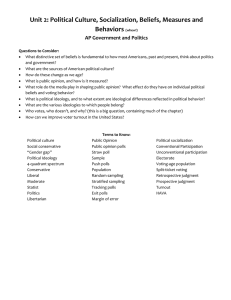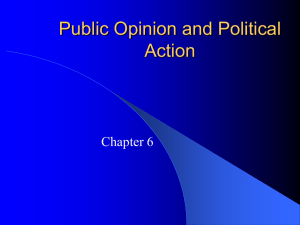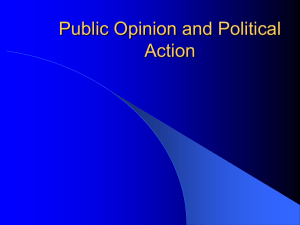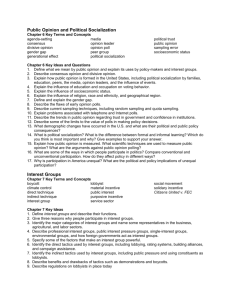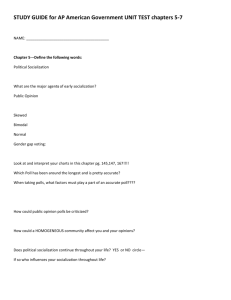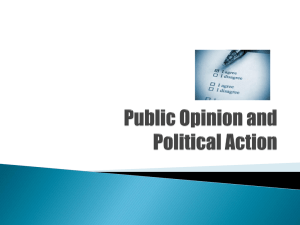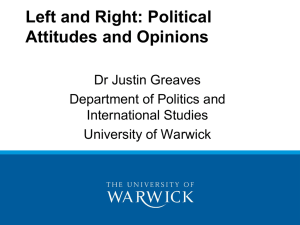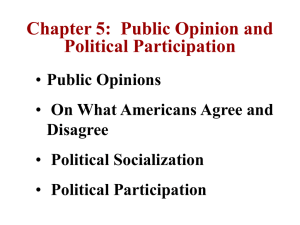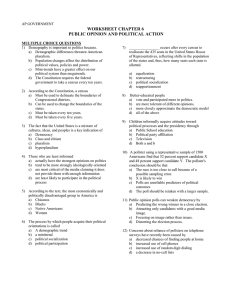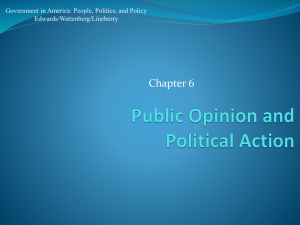Chapter 6 Powerpoint
advertisement
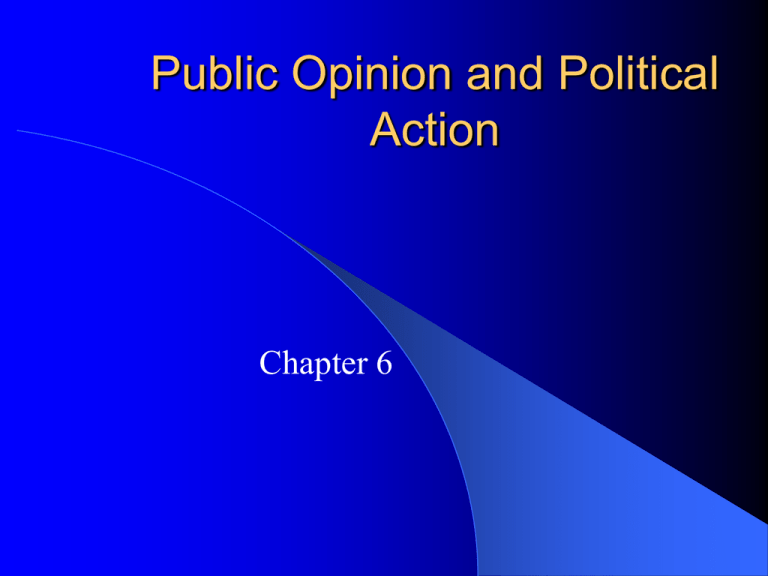
Public Opinion and Political Action Chapter 6 Introduction Public Opinion – The distribution of the population’s beliefs about politics and policy issues. Demography – The science of population changes. Census – A valuable tool for understanding population changes - required every 10 years. The American People The Regional Shift – Reapportionment: The process of reallocating seats in the House of Representatives every 10 years on the basis of the results of the census. Figure 6.2 The American People The Graying of America – Fastest growing age group is over 65 – Potential drain on Social Security – “Gray Power” How Americans Learn About Politics: Political Socialization Political Socialization: – “…the process through which and individual acquires [their] particular political orientation” The Process of Political Socialization – The Family Time & emotional commitment Political leanings of children often mirror their parent’s leanings How Americans Learn About Politics: Political Socialization The Process of Political Socialization – The Mass Media Generation gap in TV news viewing – School / Education Used by government to socialize the young into the political culture Education produces better jobs and a more positive view of government Political Learning Over a Lifetime How American Learn About Politics: Political Socialization Turnout by Age, 2000 (Figure 6.3) Measuring Public Opinion and Political Information How Polls Are Conducted – Random Sampling: The key technique employed by sophisticated survey researchers, which operates on the principle that everyone should have an equal probability of being selected for the sample. – Sampling Error: The level of confidence in the findings of a public opinion poll. Measuring Public Opinion and Political Information The Role of Polls in American Democracy – Polls help politicians figure out public preferences. – Does it make politicians think more about following the polls? – Exit Polls - used by the media to predict election day winners. – The wording of questions makes a difference. Measuring Public Opinion and Political Information What Polls Reveal About Americans’ Political Information – Americans don’t know much about politics. – Americans may know their basic beliefs, but not how that affects policies of the government. The Decline of Trust in Government – Since 1964, trust in government has declined. – Trust in government has gone up somewhat since September 11. What Americans Value: Political Ideologies Political Ideology: – A coherent set of beliefs about politics, public policy, and public purpose. Who Are the Liberals and Conservatives? – Views change over time – Currently about 37% conservative, 23% liberal, 40% moderate What Americans Value: Political Ideologies How Americans Participate in Politics Political Participation: – All the activities used by citizens to influence the selection of political leaders or the policies they pursue. Conventional Participation – Voting in elections – Working in campaigns / running for office – Contacting elected officials How Americans Participate in Politics Protest as Participation – Protest: A form of political participation designed to achieve policy changes through dramatic and unconventional tactics. – Civil disobedience: A form of political participation that reflects a conscious decision to break a law believed to be immoral and to suffer the consequences. Understanding Public Opinion and Political Action Public Attitudes Toward the Scope of Government – Many people have no opinion. Democracy, Public Opinion, and Political Action – We select our leaders, not policies. – We protest for specific policies, not against the government.
